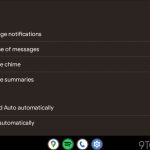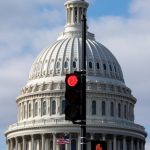“Jokowi” landed today for a short visit, which follows a three-day trip to Australia and talks between Papua New Guinea and the United States in May. At the international level, the goal is to counteract China, while at the local level it is about increasing trade. But in the background remains the conflict over the independence of West Papua.
Port Moresby () – Indonesian President Joko Widodo landed this morning in Papua New Guinea and will meet his counterpart James Marape. During the visit, local and international issues will be discussed. On the one hand, they are expected to sign an agreement on the border and trade, and on the other, “Jokowi’s” trip comes after having spent three days talking with the Australian Prime Minister, Anthony Albanese, and after the Indian Prime Minister Narendra Modi and US Secretary of State Antony Blinken meet Pacific Island leaders in May in the capital Port Moresby to counter Chinese influence.
Indonesia shares a 760 kilometer straight-line border with Papua New Guinea and it was not until March this year that Port Moresby ratified a border agreement which had been stalled in parliament for 10 years, after undergoing regular reviews and updates.
About half of the Papuan island is occupied by Papua New Guinea to the east, while to the west it is divided into the two Indonesian provinces of Papua and West Papua. Papua was annexed by Indonesia in 1969 through a referendum – called the “Free Choice Act” – in which only 1,035 village chiefs participated, who, under threat from the Indonesian army, voted unanimously in favor of control of Jakarta. The plebiscite has since been renamed the “No Choice Act” by activists demanding a self-governing territory (to be called West Papua) for Papuans, the indigenous people ethnically and culturally distinct from Indonesians. However, due to the “Indonesianization” of the Papuan provinces, 40% of the local population today are no longer ethnic Papuans.
Groups of pro-independence fighters – in particular the West Papua National Liberation Army or TPNPB – launched a conflict against Jakarta that continues to this day. The TPNPB is the armed wing of the Papua Liberation Movement (OPM). On February 7, in the Nduga highlands, Papuan guerrillas took the New Zealand pilot hostage Philip Mehrensin exchange for whom they demanded independence, but the negotiations have stalled.
Although in recent days a new direct flight that will connect the two nations for the first time, the authorities of Papua New Guinea removed the pro-independence flags flown by a group of Papuan refugee protesters, displaced by armed confrontations. “Even if they take away our flag, they can’t erase us. We are the flag,” community leader Samuel Inggamer said as several people sang the West Papua anthem in protest. “I urge President Widodo to grant us independence. It would make history if he did.”
According to ACLED organizationarmed clashes between the TPNPB and Indonesian security forces (and attacks on civilians) increased by 80% in 2021 compared to the previous year, an increasing trend since 2018. At the same time, Indonesia has provided aid and assistance assistance to Pacific island nations, including Papua New Guinea, to counter criticism of lack of development, human rights violations and the militarization of the Papuan provinces. But Papuans continue to be discriminated against as second-class citizens, despite living in the most resource-rich territory of Indonesia.
On the other side of the island, Papua New Guinea, which has no military or economy to deal with Indonesia, is a major trading partner of China, but has signed a military defense deal with the United States that allows the US military access to its ports and airports. In Sydney, however, “Jokowi” also discussed regional security with the Australian Prime Minister, among other things, although most of the talks focused on the economic cooperation in the production of batteries for electric vehicles. Indeed, Indonesia is home to some of the largest nickel reserves in the world, while Australia is a major supplier of lithium.







![[Img #74675]](https://thelatestnews.world/wp-content/uploads/2024/12/They-discover-a-new-class-of-X-ray-sources-in-the-150x150.jpg)


